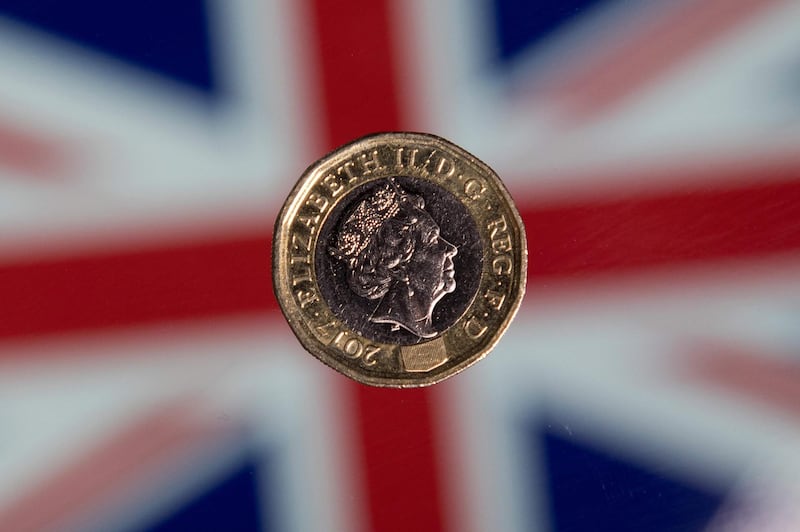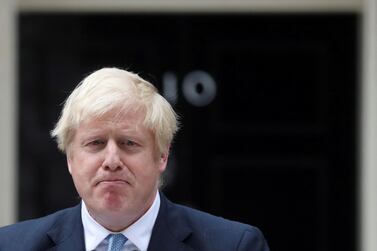The British pound swung upwards, turning positive against the dollar towards the end of the day on Tuesday after falling earlier to levels unseen since a flash crash in 2016.
Towards the end of the seesaw day sterling was up 0.1 percent against the dollar to $1.2085, an increase analysts attributed to dramatic events in parliament. After prime minister Boris Johnson's government lost its majority in the commons, the likelihood of a no-deal Brexit appeared more remote.
“Some investor feel the chances of a no-deal Brexit are lower,” Garry White, chief investment commentator at Charles Stanley, told Yahoo Finance. “Whether they are right or not remains to be seen. Personally, I think no-deal is more likely.”
The UK parliament is expected to vote on a proposal that could delay Brexit until 2020. Mr Johnson has indicated he will push for a snap election if this is the case which could cause further volatility.
"If the government’s lost majority inclines prime minister Boris Johnson even closer to calling a general election — something he’s suggested he could do if MPs block no-deal — sterling pressure should rise further," Ken Odeluga, a market analyst at City Index, said.
“As such, any near-term bounce was always likely to be dicey. The government’s lost majority might ensure the pound’s recovery is a short one,” he added.
Before the rise, sterling plunged as much as 0.8 per cent to $1.968 in early morning trading, the lowest since 2016 when the country held a referendum on its membership of the European Union. The pound dropped 0.5 per cent against the euro to 91.36 pence.
Barring an October 2016 flash crash when sterling briefly reached $1.15, the British currency has not regularly traded at such levels since 1985, according to Refinitiv data.
"Boris Johnson has gone wild with the idea that the Brexit deadline could be delayed by three months to January 31st, if British lawmakers refuse to leave the EU without a deal," said Ipek Ozkardeskaya, senior market analyst at London Capital Group.
"Johnson asks [for] the freedom to walk out the EU with empty hands, with the belief that this could increase his negotiation power to obtain a better deal. But not everyone shares his opinion. Playing Johnson’s way is a risky alternative and many policymakers are willing to seek a compromise with the EU to temper the negative impacts of an inevitably painful divorce."
Ms Ozkardeskaya said Mr Johnson, with a slim majority, cannot afford to lose support from Conservative Party members. "As a result, he is now pressuring Tories to stand next to him at this week’s vote in the House of Commons to deliver Brexit by October 31 with ‘no ifs or buts’. If not, he is threatening to expulse rebels and to throw a snap election by October 14."
The swing comes a day after disappointing UK manufacturing PMI data were released by IHS Markit/CIPS. The 47.4 reading against a forecast of 48 well below the 50 point threshold which differentiates between a contraction and expansion. The result was the weakest since July 2012 as new orders contracted at the fastest pace in over seven years and business confidence fell to a record low.
"The next 48 hours will determine whether or not this high- risk strategy from the prime minister has paid off, or whether or not he has been corralled into a corner, or conversely still there a several options where we are simply going for the uncertainty of an election mid-October," said Andrew Milligan, head of global strategy at Aberdeen Standard Investments.
Oliver Blackbourn, a portfolio manager at Janus Henderson Investors, said sterling was "heading towards 1.10ish versus the dollar if we move towards a more negative outcome". Any encouraging news would trigger a bounce in the pound because so many investors were betting against it, he said.
A no-confidence vote on Tuesday is likely and the government could lose given a 1-seat majority, said Marie Owens Thomsen the global head of investment intelligence at Indosuez Wealth Management .
"Early elections are not necessarily going to favour the Conservatives, as evidences as well by Theresa May's attempt under less fraught circumstances," Ms Owen Thomsen said. "Risks have increased because there is now less time to arrive at a solution, and thus the risk of crashing out of the EU must also have risen."
The UK and EU have to reach an agreement by October 31. EU leaders have said they are unwilling to revisit the withdrawal agreement concluded with Ms May.







